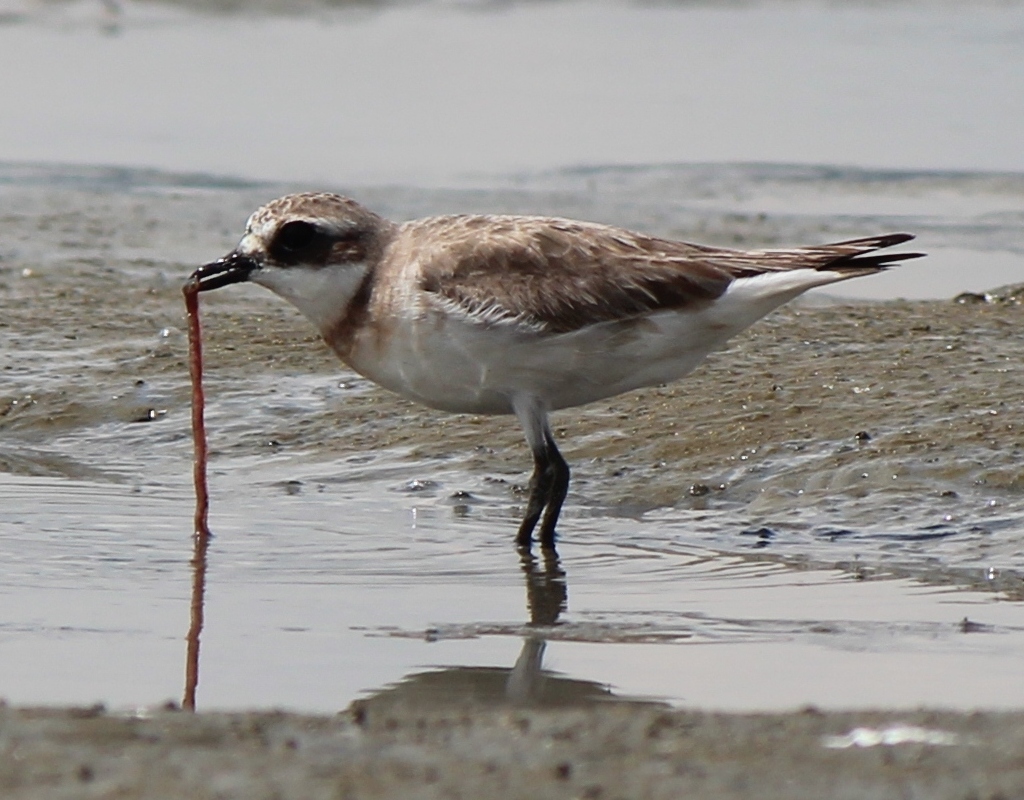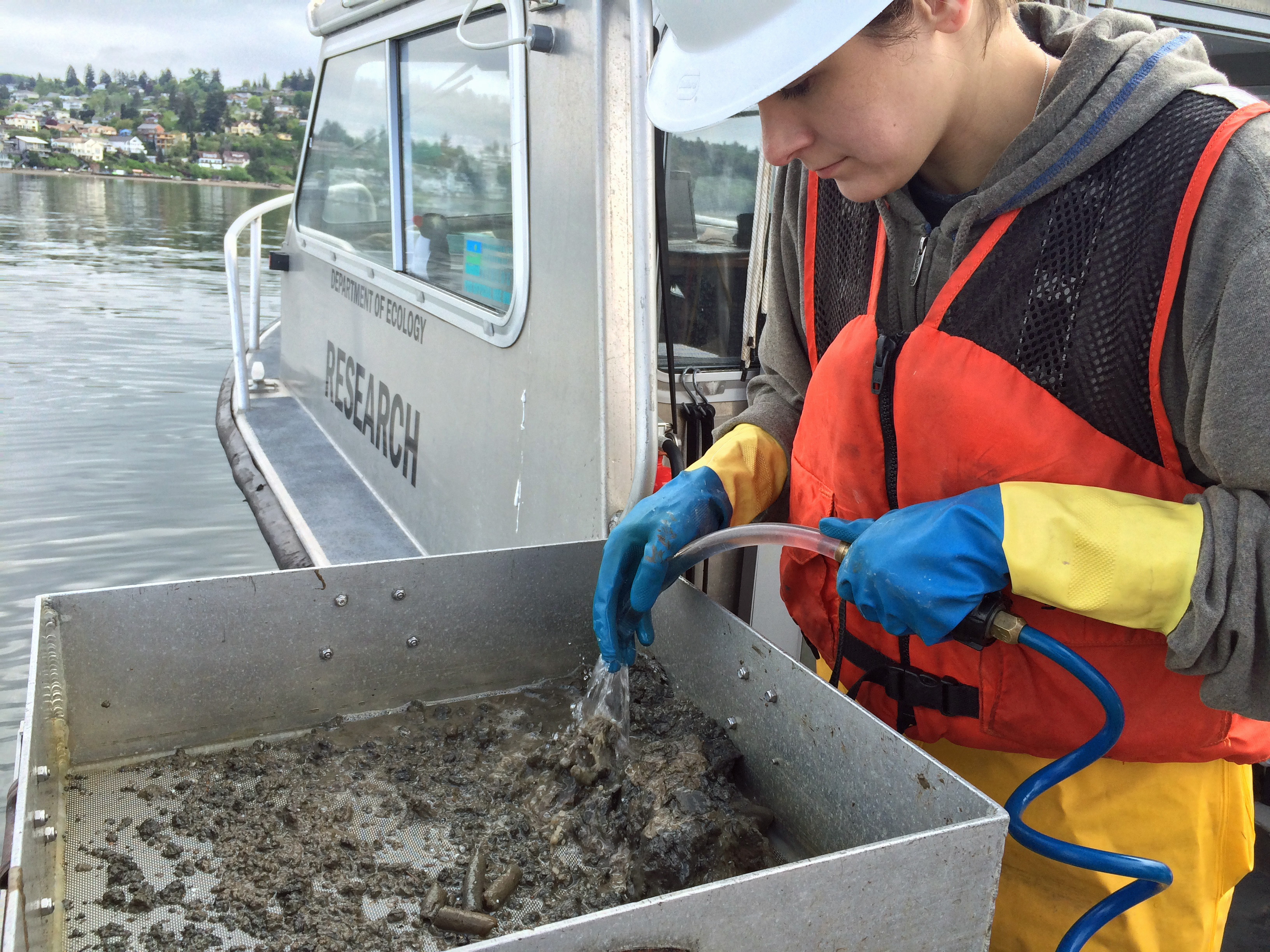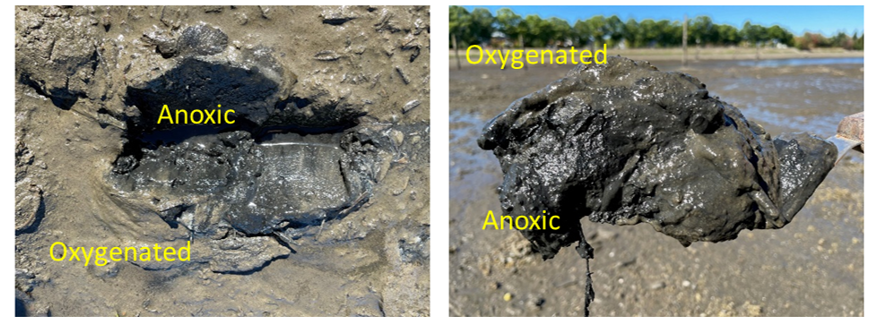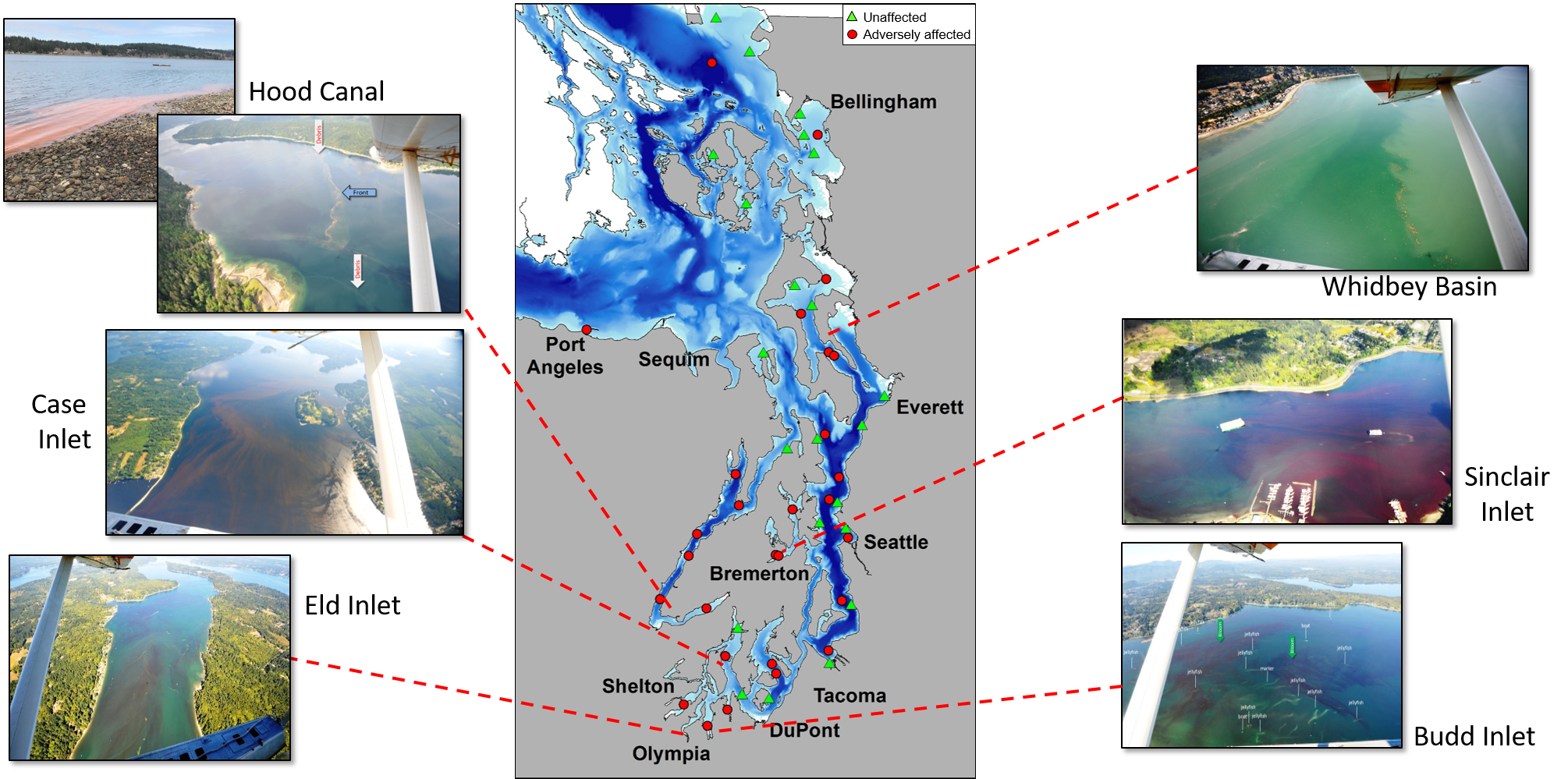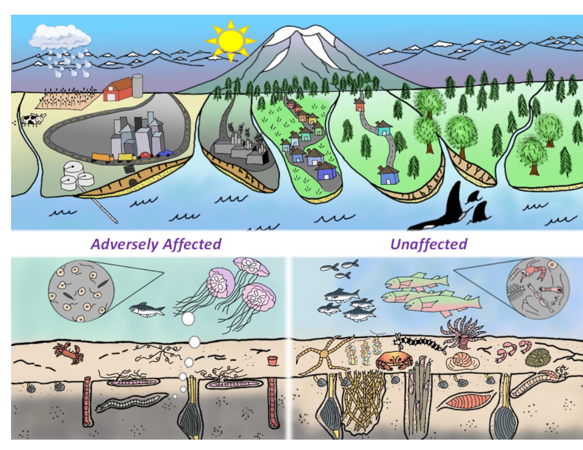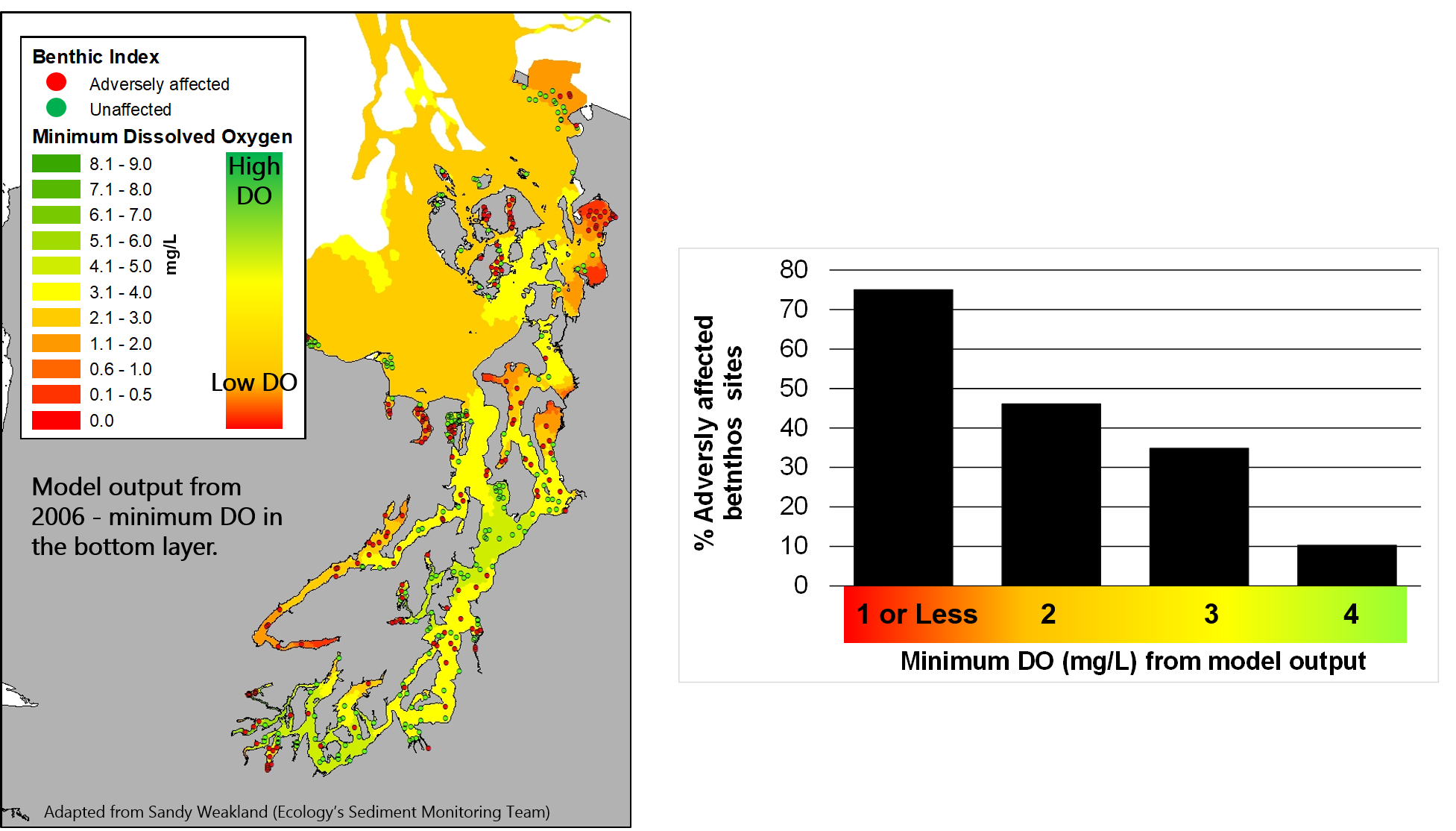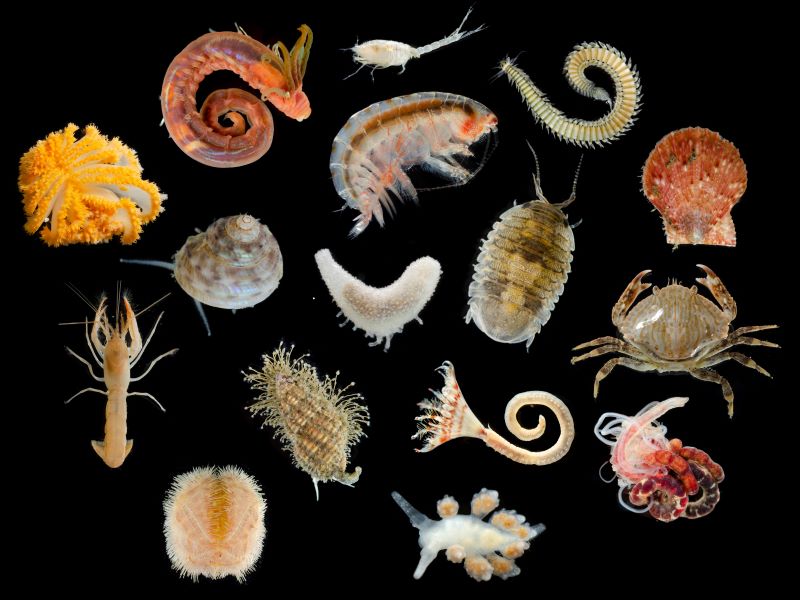
Puget Sound benthic critters; photos by Gustav Paulay, Florida Museum of Natural History
As members of Ecology’s Marine Sediment Monitoring Team, it’s our job to track the health of the sediments at the bottom of Puget Sound, and the sediment-dwelling invertebrates, or benthos, that call the mud home.
Three decades of monitoring have documented declines in the health of Puget Sound benthic communities, but we have found little correlation with the chemical contaminants we measure. So what other factors could be contributing to the decline? To help get to the bottom of this mystery, we're examining additional environmental variables that might shed more light on the story.
Shore bird eating a marine worm. Photo by Alspdake, Wikimedia Commons. Licensed under CC BY-SA 3.0.
Worms – they’re what’s for dinner
A decline in mud-dwelling critters might not sound like cause for alarm for most folks, but if you’re a fish, bird, or marine mammal living in Puget Sound, you probably care… a lot. Benthic organisms like worms and tiny crustaceans are a vital link in the marine food web that supports these larger animals. Some benthic species are also commercially and culturally important to humans (here’s looking at you, Dungeness crabs and shellfish), so there’s a lot at stake if their populations are thrown out of whack.
Canaries in the cold mud - benthos losing ground
Benthos don’t move around much, which means they can’t escape from most natural and human-caused environmental stressors, including pollution, nutrient loading, low dissolved oxygen, and climate change. Their communities can change as their environment shifts, making them excellent biological indicators.
We track these changes over time by collecting benthos annually, counting and identifying the species we find. Our Benthic Index uses these abundance and diversity measures, plus the abundance of stress-tolerant and stress-sensitive taxa (a fancy word for groups of species), to determine whether benthic communities are adversely affected (less healthy) or unaffected (more healthy). Adversely affected communities tend to have fewer species, usually those known to be stress-tolerant. Unaffected communities have lots of species, some of which are more sensitive to stress. The graph below shows that unaffected communites have been losing ground in Puget Sound for several decades.
Left: Characteristics of both types of communities designated by our Benthic Index. Right: Percent of stations in Puget Sound with adversely affected or unaffected benthos in sediment surveys.
All good things in moderation
With toxicity of the pollutants we have measured, such as metals and persistent bioaccumulative chemicals, ruled out as the primary culprit, we’ve turned to some of the other stressors that benthos face. On the front lines of the sediment-water interface, benthic animals play a key role in cycling carbon, nutrients, and gases as they move through, feed, and breathe in the mud. They are also subjected to whatever rains down through the water column, including organic matter. Organic matter originates from the wastes and remains of carbon-based life forms like plants, animals, and humans. It consists of carbon and nutrients, including nitrogen. Of those, we measure total organic carbon and total nitrogen. Organic matter is an important food source for many benthic species, but when there is too much, its decomposition can deplete valuable oxygen and release toxic by-products such as sulfide and ammonia. This results in a visible and often “rotten egg” smelling anoxic mud layer, which is not a friendly place for most benthos to thrive.
The mud in the right-hand photo shows lighter-colored oxygenated sediment layer over the black anoxic sediment layer. You can also see these layers from the hole left behind in the left-hand photo.
Spatial patterns in the benthos and organic matter line up
Recently, we started monitoring carbon and nitrogen levels in Puget Sound sediments. Initial results indicate that locations with high levels of sediment organic matter are often the same locations where adversely affected benthic communities are found. Adversely affected communities are found throughout Puget Sound, but especially in the poorly-flushed terminal inlets of Whidbey and Bainbridge Basins, Hood Canal, and South Puget Sound. Our data show that total organic carbon and total nitrogen accumulate in higher concentrations in terminal inlets than elsewhere in Puget Sound.
Terminal inlets are like marine “cul-de-sacs” where there’s only one way for seawater to get in and out, meaning there is less water circulation and more time for water to stick around and deposit organic matter there. Rivers and streams also pour into these terminal inlets, delivering organic matter and nutrients from upstream in the watershed. Excess nutrients can cause algae in the water to grow rapidly or “bloom”. When these algae die, they sink to the bottom, decompose, and add additional organic matter to the sediments.
Ecology’s Eyes Over Puget Sound program has documented large algal blooms in many of the terminal inlets where we see adversely affected benthos.
It’s complicated
Our Conceptual Model depicts natural and human-caused forces on Puget Sound’s ecosystem components, with a focus on the response of the sediments and their benthic invertebrate communities.
Our data strongly support the hypothesis of changes in benthic invertebrate communities with increases in carbon and nitrogen. In areas where both the number of animals and the number of species in the sediments has decreased, we have found higher levels of organic carbon and nitrogen.
But like many scientific questions, the answer might not be that simple. There are human and natural sources of nitrogen that make their way into Puget Sound, and our sediment monitoring doesn’t distinguish between them. Other groups at Ecology study nitrogen in Puget Sound in more depth; visit this nitrogen story map to learn more.
Other related stressors may also be contributing to the decline in benthos; for example, low dissolved oxygen in sediment porewater and overlying waters. While our sediment team does not directly measure dissolved oxygen, we are able to see that areas where benthic communities are adversely affected correspond to areas where the Salish Sea Model predicts lower dissolved oxygen.
Comparing our data with Salish Sea Model predictions shows that areas where benthic communities are adversely affected in Puget Sound correspond to predicted areas of lower dissolved oxygen
No one environmental parameter measured to date can provide a complete explanation of which stressors are responsible for changes in Puget Sound’s benthic communities… but we are learning which things might be important to keep an eye on as we continue monitoring into the future.


